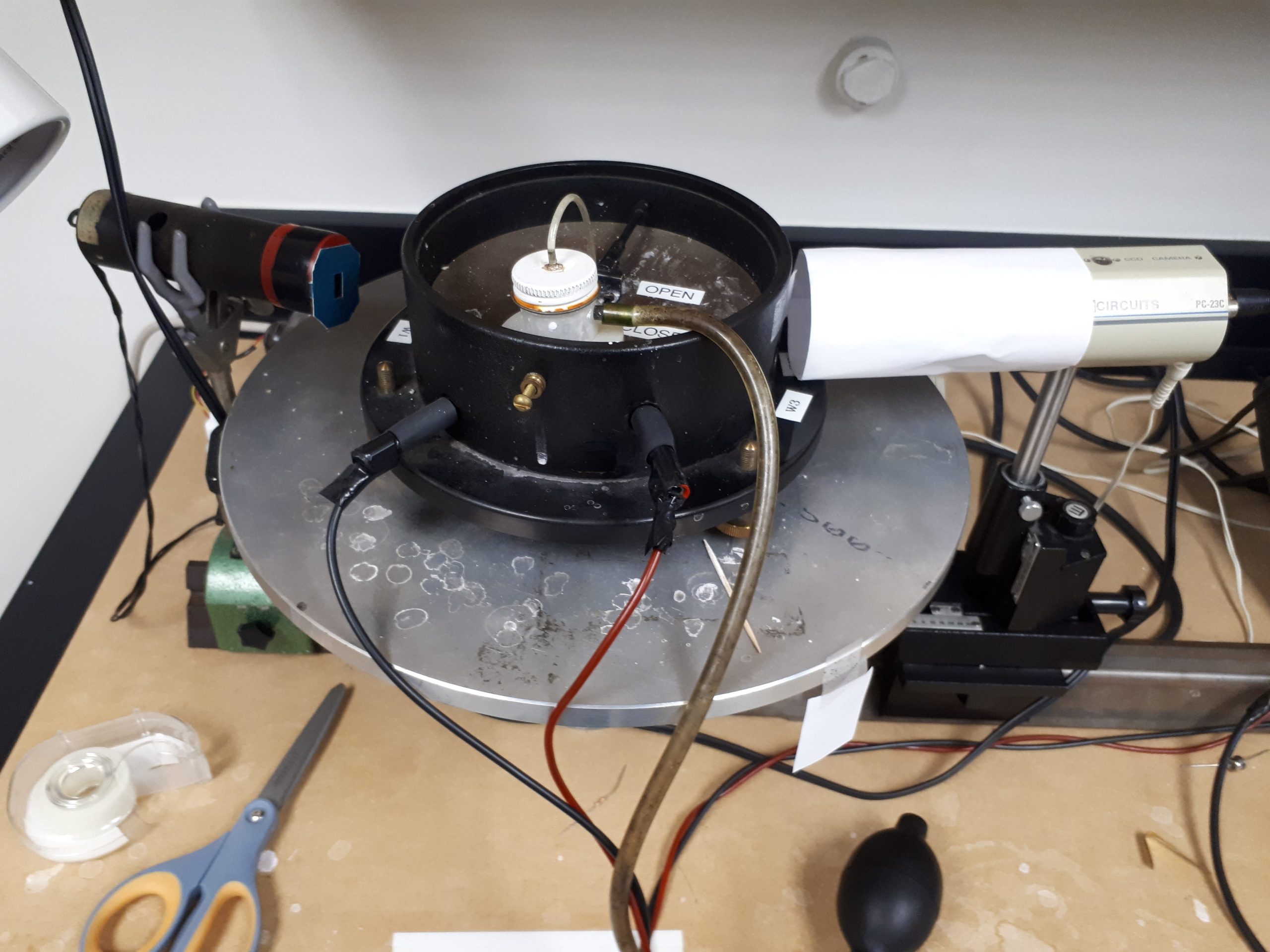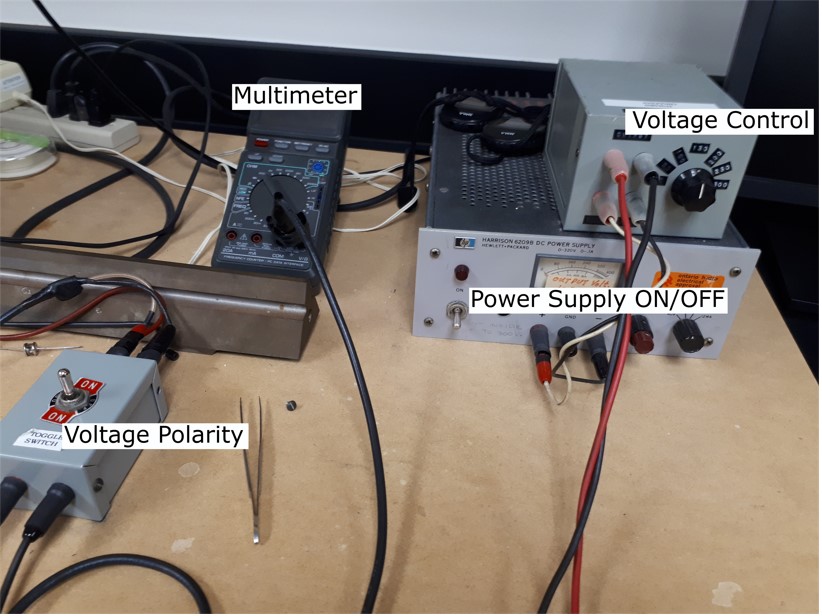Milikan Oil Drop
Experimental Apparatus
Polystyrene Beads
The Millikan’s Oil Drop apparatus is shown in Figure 2. Luckily for you, we’ve modernized Millikan’s original experiment, making it SIGNIFICANTLY easier. Instead of oil droplets, you’ll be using polystyrene spheres. These polystyrene spheres have a relatively uniform diameter of 1 ![]() m and a density of 1.05 g/cm2. The beads enter the parallel plate capacitor through a hole in the top plate using an aerator. You’ll monitor the position of the spheres using a camera. Data from the camera is digitized by the PC for real-time analysis.
m and a density of 1.05 g/cm2. The beads enter the parallel plate capacitor through a hole in the top plate using an aerator. You’ll monitor the position of the spheres using a camera. Data from the camera is digitized by the PC for real-time analysis.
 Figure 2: The modernized Millikan Oil Drop experiment. Note the light source to the left, and the camera to the right. Polystyrene spheres enter through the atomizer and tube at the top of the apparatus
Figure 2: The modernized Millikan Oil Drop experiment. Note the light source to the left, and the camera to the right. Polystyrene spheres enter through the atomizer and tube at the top of the apparatus
Parallel Plate Capacitor
The parallel-plate capacitor has yet to be improved upon since its inception, so that much is the same. The capacitor is enclosed so that the slightest breeze doesn’t blow all of the beads away. The enclosure has two windows that you’ll find useful; one so that a beam of light can enter the enclosure and light up the polystyrene beads, and another for the camera to look in and monitor the beads. The distance between the plates of this capacitor is 7.87(1) mm.
A benchtop power supply generates the voltage between the parallel-plate capacitor. The variable-output power supply can be set to any voltage up to 300 V. A three-way switch allows the user to apply +V, 0, or -V to the capacitor. These electronics are shown in Figure 3.

Figure 3: Electronics used to operate the Millikan Oil Drop experiment
Sotware
Another modern improvement to the oil drop experiment is the addition of video recording and digital image analysis. OBS is a free streaming and recording software that we use to record video from the CCD camera. FIJI (which is actually just ImageJ) is another free software used for image and video analysis. With these two software, we can record videos of the beads moving under the influence of gravity and precisely measure the distances traversed and time elapsed for every visible bead in the video as opposed to measuring one bead at a time.
